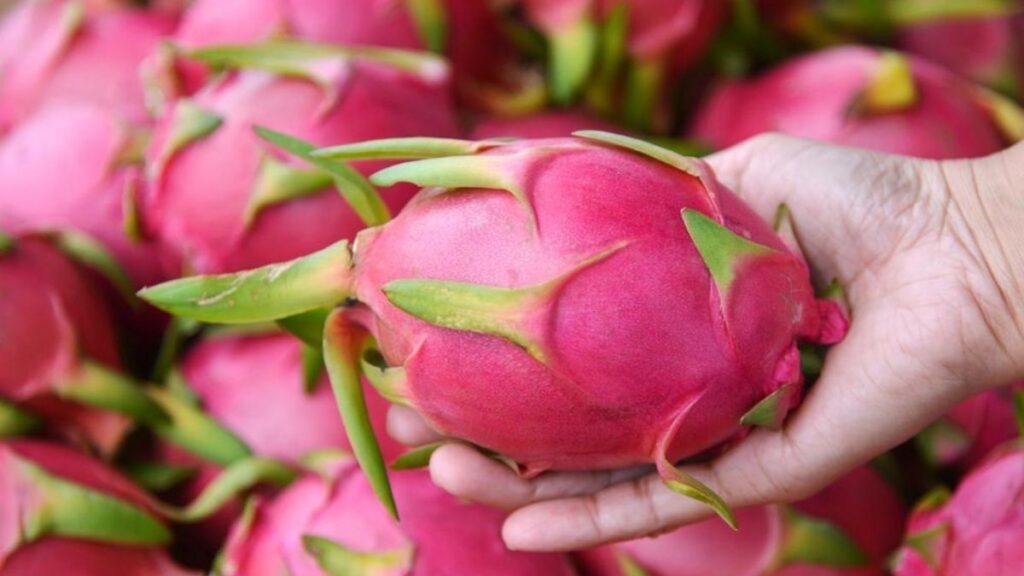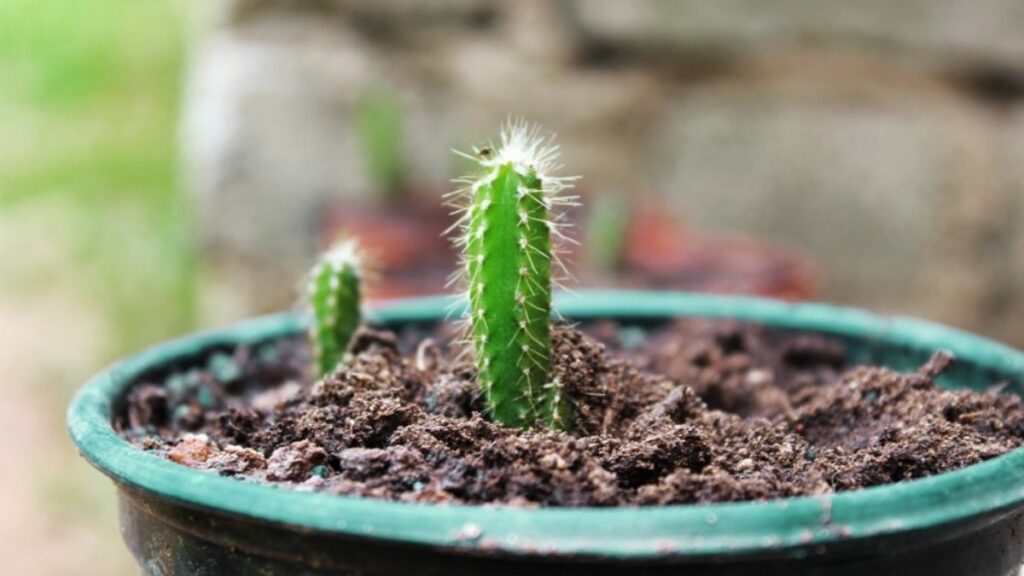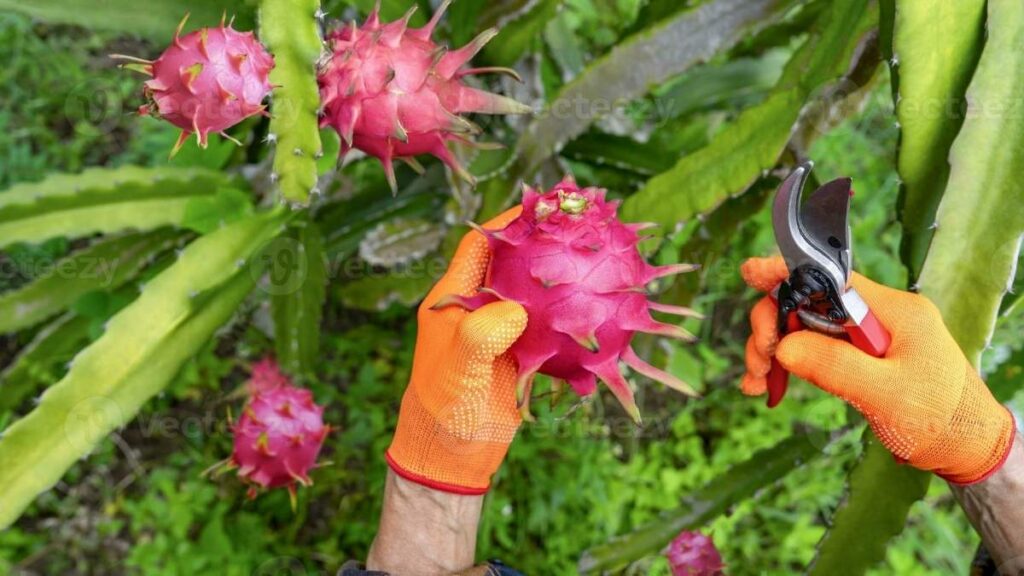Dragon fruit, also known as pitaya, is one of the most exotic and eye-catching fruits you can grow at home. With its bright pink skin and white or red flesh speckled with tiny black seeds, it’s not only beautiful but also rich in vitamins, fiber, and antioxidants. The best part is that you don’t need a big garden to grow it. With the right approach, you can successfully grow dragon fruit in pots right on your terrace or balcony.
Understanding the Dragon Fruit Plant
Dragon fruit comes from a type of climbing cactus native to Central and South America. It loves warmth, sunlight, and well-draining soil. The plant has long, fleshy stems that grow upright and need support as they mature. It produces large, fragrant white flowers that bloom at night and give way to the unique fruits that make the plant so desirable.
Growing dragon fruit in pots is not only practical for people living in apartments but also helps control the plant’s growth. Plus, it’s easy to move the pots to protect them from heavy rain or extreme cold.
Choosing the Right Variety

There are mainly three types of dragon fruit plants: red-skinned with white flesh, red-skinned with red flesh, and yellow-skinned with white flesh. For home growing, the red-skinned varieties are the most popular because they are hardy and bear fruit more regularly. You can choose varieties like Hylocereus undatus (white flesh) or Hylocereus costaricensis (red flesh).
Selecting the Perfect Pot
Since dragon fruit plants have shallow roots but can grow quite tall, you need a sturdy pot that is wide and deep enough to provide stability. A pot that’s at least 18 to 24 inches in diameter and around the same depth is ideal. Make sure the pot has good drainage holes at the bottom because dragon fruit roots do not like sitting in water.
Terracotta or cement pots are excellent choices since they keep the soil cool and allow air to circulate better than plastic ones.
Preparing the Soil Mix

The right soil mix is key to healthy growth. Dragon fruit prefers slightly acidic to neutral soil with a pH between 6 and 7. Use a well-draining mix that doesn’t retain excess moisture. A good mixture can be made using equal parts of garden soil, sand, and compost. You can also add a little coco peat or perlite to improve aeration.
Before planting, fill the pot with this mix and leave a few inches from the top for watering space. You can also place small stones or broken pieces of clay pot at the bottom to further help with drainage.
Planting Dragon Fruit

You can grow dragon fruit either from seeds or cuttings. Seeds take longer to mature and fruit, so most home gardeners prefer stem cuttings.
To plant from cuttings, choose a healthy stem from a mature dragon fruit plant. Cut a segment about 8 to 10 inches long and let it dry for two to three days in a shaded area. This drying process allows the cut end to heal and reduces the risk of rotting. Once it’s ready, plant the cutting about two to three inches deep into the soil.
Water lightly after planting and keep the pot in partial shade for a week or two until new growth appears. Once the plant establishes, move it to a sunnier location.
Providing Proper Support

As dragon fruit grows, its stems become heavy and need something to climb on. You can use a wooden stake, bamboo pole, or a small trellis in the center of the pot. Tying the stems gently with soft cloth or garden ties will keep them upright and prevent damage.
Many terrace gardeners create a T-shaped support structure where the stems can grow up and then spread over the top. This helps in even sunlight exposure and better fruiting.
Watering and Feeding the Plant
Being a cactus, dragon fruit does not like excessive watering. Water only when the top layer of soil feels dry to the touch. During hot summer days, watering once every two to three days is sufficient, while in cooler months, reduce the frequency. Always make sure the water drains well from the pot.
Feed the plant every month during the growing season with a balanced organic fertilizer or compost. You can also add a small amount of cow dung manure or vermicompost around the base of the plant. Avoid chemical fertilizers as they can burn the roots in pots.
Sunlight and Temperature Requirements
Dragon fruit loves sunlight. Keep the pot in a spot where it receives at least six to eight hours of direct sunlight daily. If your balcony or terrace gets partial shade, make sure the plant still gets enough light for healthy flowering and fruiting.
The ideal temperature range for dragon fruit is between 20°C and 35°C. It can tolerate short periods of cold but not frost. If you live in an area with cold winters, move the pot indoors or cover the plant with a protective sheet.
Pollination and Fruit Development
Dragon fruit flowers are large and bloom at night, lasting only for a few hours. Some varieties are self-pollinating, but others need cross-pollination from another plant. If your plant doesn’t bear fruit, try hand pollination. Simply use a small brush to transfer pollen from one flower to another when they bloom.
After pollination, fruits start forming within a few weeks. They mature in about 30 to 50 days, turning from green to bright pink or red.
Harvesting the Fruits

When the fruits are fully colored and their scales start to dry slightly, they are ready to harvest. Gently twist or cut the fruit from the stem. Overripe fruits become soft and lose their flavor, so it’s best to pick them at the right time.
Common Problems and Care Tips
Dragon fruit is generally low maintenance but can be affected by root rot if overwatered. Pests like ants or mealybugs might appear, so inspect the plant regularly and remove them manually or spray a mild neem oil solution.
Prune the plant occasionally to remove old or damaged stems. This encourages new growth and better fruiting.
Final Thoughts
Growing dragon fruit in pots on your terrace or balcony is a rewarding experience. It doesn’t require much space or effort, yet it gives you stunning flowers and delicious fruits. With a bit of patience and care, your plant will thrive and produce fruits for many years.
So, if you’ve been thinking about adding a touch of tropical beauty to your home garden, dragon fruit is the perfect choice. Just give it sunlight, support, and love, and it will fill your terrace with color and charm.



